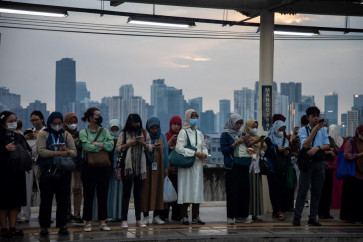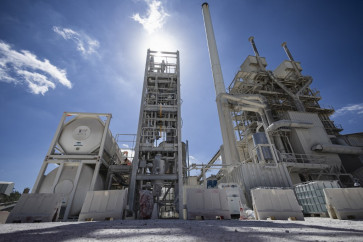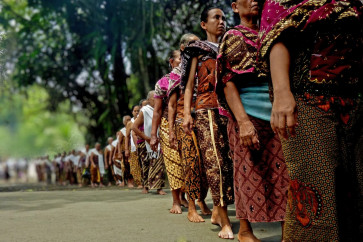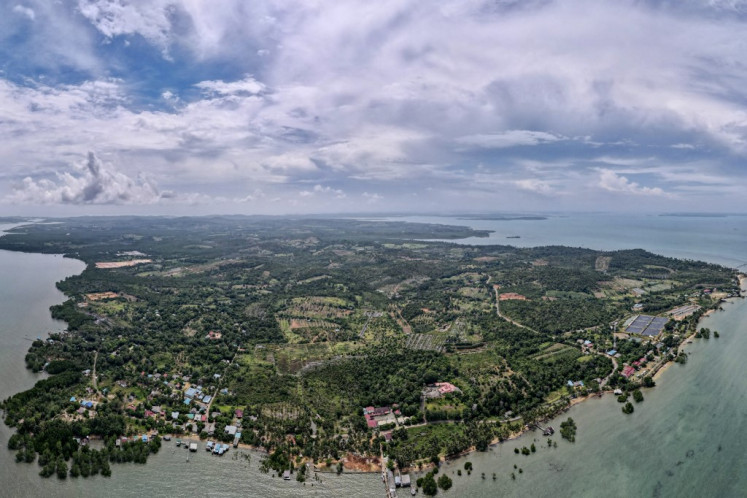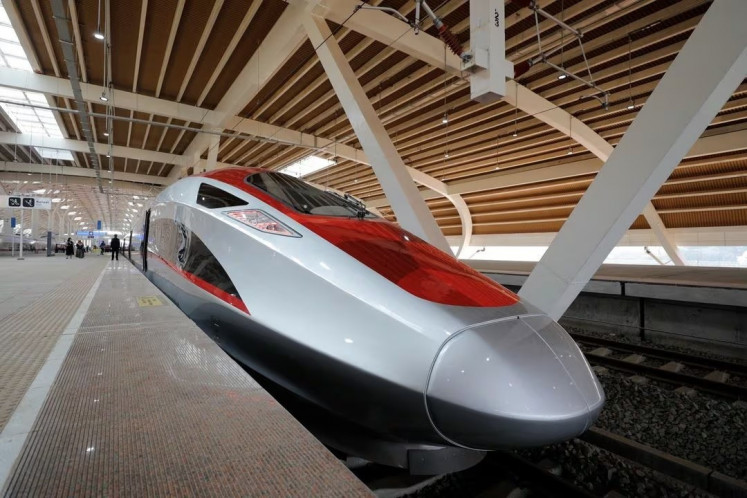Popular Reads
Top Results
Can't find what you're looking for?
View all search resultsPopular Reads
Top Results
Can't find what you're looking for?
View all search resultsTracing the glory of Majapahit
Ceremonial: The Tikus Temple is believed to have been a royal bathhouse
Change text size
Gift Premium Articles
to Anyone
Ceremonial: The Tikus Temple is believed to have been a royal bathhouse.
The Majapahit kingdom is believed to be the largest pre-independence kingdom in the archipelago.
Even after more than 700 years, vestiges of the kingdom’s heyday can still be seen in Trowulan district in Mojokerto, East Java, where the kingdom had its center.
If it was not for Gajah Mada, a powerful military leader and mahapatih (prime minister), the kingdom might not have reached its peak of glory.
One day in the 13th century, the general, during his appointment as mahapatih under the rule of Queen Tribhuwana Wijayotunggadewi, vowed not to taste any spices until he had conquered all of the Southeast Asian archipelago, known as Nusantara, for the empire. The oath is popularly known as the Sumpah Palapa (Palapa Oath).
Gajah Mada is believed to have been successful, unifying Nusantara under the kingdom’s control — except the Padjadjaran kingdom in West Java, Majapahit’s closest neighbor and the only remaining state that refused to recognize Majapahit’s hegemony.
Some of the kingdom’s heritage, including the water canals, remain intact and well-preserved, spread out over a 99-square kilometer area in humble Trowulan.
“Thanks to the irrigation system established during the Majapahit era we have never been flooded here,” a native of Trowulan, Herutomo, said recently.
Segaran Pool
The Segaran pool was one of 32 ancient ponds — and the largest of all — from the Majapahit era that still can be seen today. The 46,875-square meter pool was built slightly higher than its surroundings and is currently used to irrigate paddy fields adjacent to the pool. Excavation work has uncovered channels for incoming and outgoing water, showing that the people of that time were well aware of the importance of preserving and recycling water to ward off water crises.
Besides functioning as a water reservoir, the lake was also believed to have been used to lower the heat in the area.
A folktale says that during the kingdom’s heyday, the pool of water was used as a recreational site for the royals, as well as a place where the king entertained his foreign guests. When supper was finished, the king would throw the golden cutlery they were using into the lake as a way to show how wealthy the kingdom was.
But little did the guests know that a net had been set up under the surface to catch the cutlery. Once the guests left, the cutlery would be pulled back to the surface to be used again.
Wringin Lawang Gate
Wringin Lawang, which translates as ficus tree and gate, is a gate at a height of 15 meters. Locals call it Wringin Lawang because there used to be a ficus tree next to the gate. The tree was cut in 1993 on concerns that the roots were disturbing the structure. Just like most of Majapahit’s archeological sites, the gate was made of red bricks.
Wringin Lawang is believed to have functioned as a gate into a high-profile residential compound. Digging work has found that there used to be high walls attached to each side of the gate, causing speculation that it also functioned as a separator to prevent people from outside Majapahit from entering the area.
Some locals believe Wringin Lawang was the gate to the Majapahit palace.
Momentous: Pendopo Agung is the site where Gajah Mada’s famous Palapa Oath is believed to have been spoken.
Pendopo Agung Hall
This was where Gajah Mada’s famous Palapa Oath was spoken aloud.
Twenty-six hexagonal structures found in the area indicate that the site used to be a spacious hall, believed to be the main hall of the palace.
A hall was later rebuilt based on the structures on Dec. 15, 1966. The Pendopo Agung is currently owned by the Brawijaya Military District Command and is open to the public.
Remains: Candi Bajang Ratu is one of the remains from the Majapahit kingdom that can still be seen in Trowulan in Mojokerto, East Java. Bajangratu Gate
Bajangratu translates as failed king. The gate was built as a tribute to the son of Raden Wijaya and the second ruler of Majapahit, Jayanegara. Jayanegara was only 15 years old when he was sworn in. Under his brief leadership, the kingdom saw numerous uprisings and the young king was killed by his personal physician not long after beginning his rule.
The gate, which was built to commemorate the death of Jayanegara by his sister and successor, Tribhuwana, is believed to be the gate to a holy structure whose location remains a mystery.
Tikus Temple
Tikus Temple, measuring 22.5 meters on each side, is believed to have been a royal bathhouse. The pool was also believed to be used during Hindu ceremonies due to its shape, which resembled Mount Mahameru in India, the serene abode of the gods. The name Tikus reflects the history of the place’s discovery. The area was suffering from a mouse plague before it was uncovered.
Brahu Temple
Many believe that the Brahu Temple was a place to cremate the Majapahit kingdom’s dead.
However, there is no evidence to support this thesis.
Kedaton Temple
Judging from its shape, which resembles a stage, the Kedaton Temple — located in the Kedaton site — is believed to be a place where the people of Majapahit performed religious rituals. Archeological studies have found that the site was a residential area as there were many household tools found in the compound.
An excavation conducted between 1996 and 2002 found the skeletons of five people, believed to be the last of the Majapahit kingdom.
— Photos By JP/Sita W. Dewi




